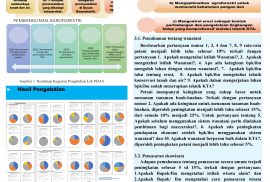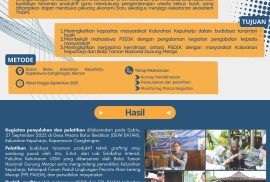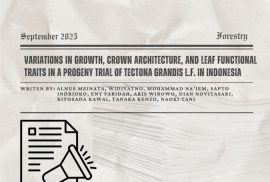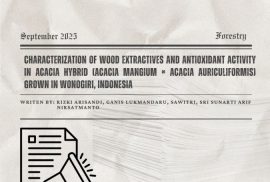Kegiatan Pengabdian kepada Masyarakat Program Doktor Ilmu Kehutanan tahun 2025

Pengabdian kepada Masyarakat Program Studi Doktor Ilmu Kehutanan tahun 2025:

Pengabdian kepada Masyarakat Berbasis Laboratorium Sistem Informasi Spasial dan Pemetaan Hutan Departemen Manajemen Hutan, Fakultas Kehutanan UGM tahun 2025
Pengabdian kepada Masyarakat Berbasis Laboratorium Pengelolaan Kawasan Konservasi Departemen Konservasi Sumber Daya Hutan, Fakultas Kehutanan UGM tahun 2025

KAK Tawaran Hibah Bantuan Publikasi Tahun 2025 batch 2 bisa didownload dibawah ini:
KAK Tawaran Hibah Bantuan Publikasi

Pengumuman lengkap bisa didownload dibawah ini:
Pengumuman Hasil Seleksi
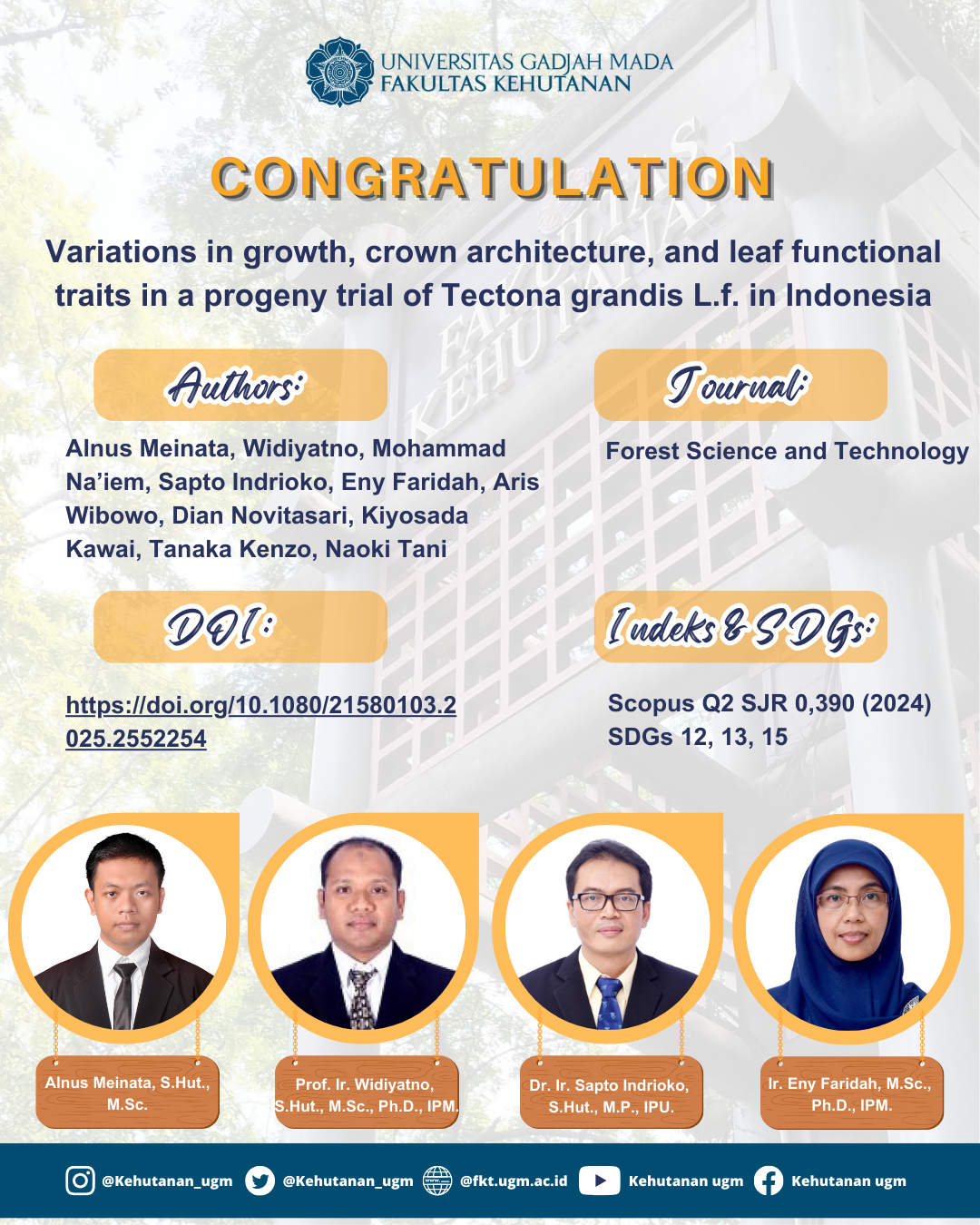
Abstract
Teak (Tectona grandis) is a valuable tropical timber species, but knowledge about its environmental adaptability for tree breeding is limited. Progeny trial is crucial for improving breeding materials as progeny performance and resilience to environmental stresses can be assessed for future breeding effort. In this study, we examined the variations in growth, crown architecture and leaf traits in a progeny trial in Indonesia. We retained the best components
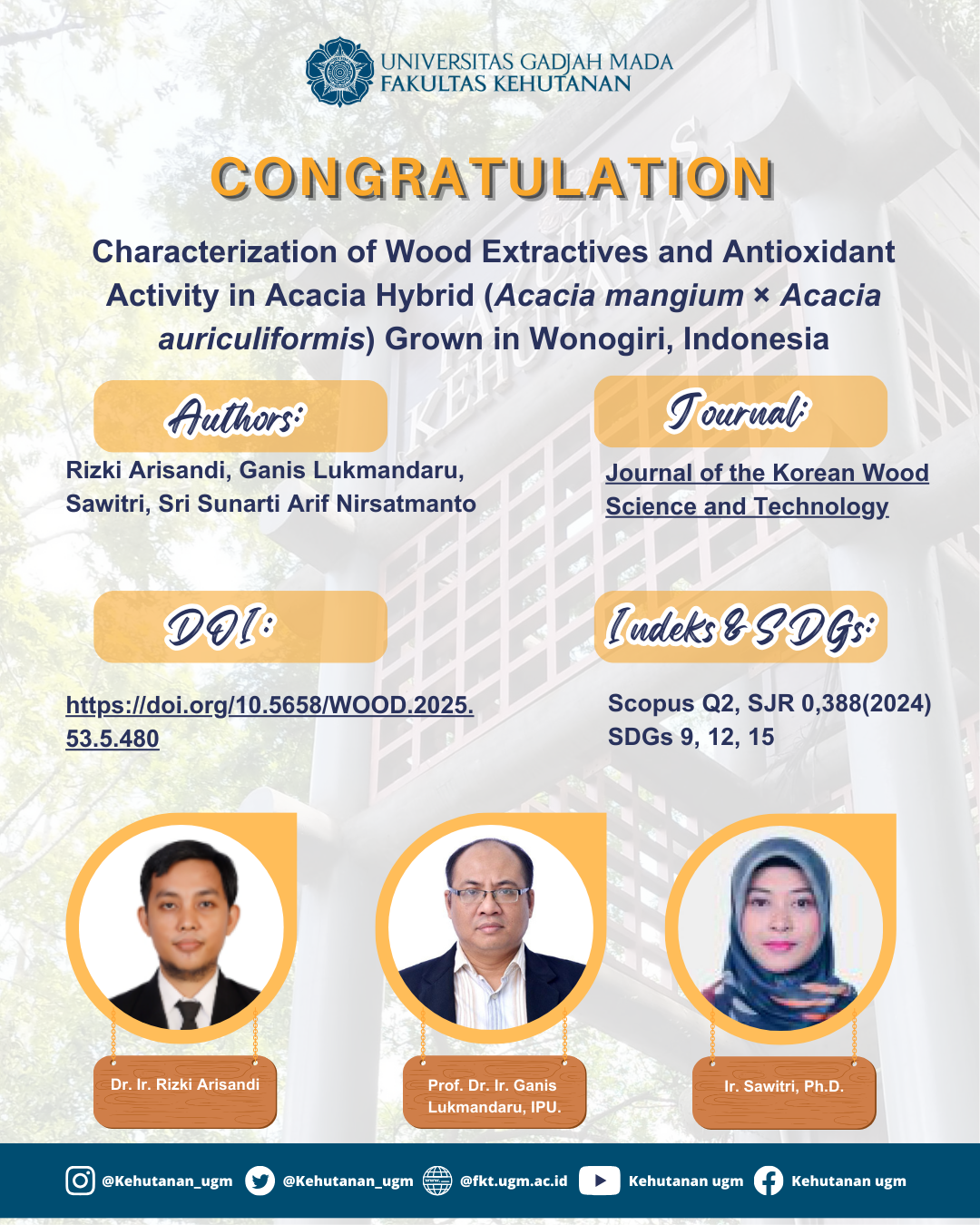
Abstract
This study aimed to evaluate extractive composition and antioxidant activity of Acacia hybrid (Acacia mangium × Acacia auriculiformis) variety, namely Purwo Sri Ah015D wood, as a first step in future development to improve resistance to diseases. Wood powder from axial (bottom, middle, top) and radial (near pith and near bark) positions were successively extracted by n-hexane, methanol, and hot water solvents. The dried extracts (except n-hexane) were used

Link Pendaftaran bisa diklik dibawah ini:
Pendaftaran Presenter SNRU
Template Abstrak dapat dilihat dibawah ini:
Template Abstrak SNRU
Template Naskah Publikasi Prosiding dilihat dibawah ini:
Template Naskah Full Prosiding SNRU

Abstract
In the tropical forests of Southeast Asia, the dipterocarp species stands out as the most significant tree group in terms of ecosystem stability and forestry management. Shorea macrophylla, found on Borneo Island, is particularly noteworthy for its rapid growth, high oil content nut production, and versatile timber characteristics, making it a prime candidate for plantation material in rehabilitating degraded forests. We collected population samples of S. macrophylla

